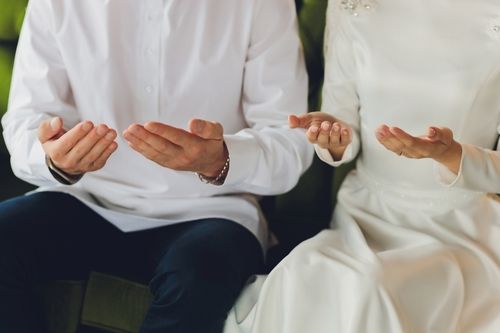 Muslim marriage ceremonies, known as Nikah, are celebrated with much cultural diversity but are bound by common Islamic principles. These ceremonies are not only a celebration of love and commitment but also a religious and social contract between the couple and their families. This article delves into the various aspects of Muslim marriage ceremonies, exploring their significance, the key rituals involved, and the cultural variations that exist within this rich tradition.
Muslim marriage ceremonies, known as Nikah, are celebrated with much cultural diversity but are bound by common Islamic principles. These ceremonies are not only a celebration of love and commitment but also a religious and social contract between the couple and their families. This article delves into the various aspects of Muslim marriage ceremonies, exploring their significance, the key rituals involved, and the cultural variations that exist within this rich tradition.
The Significance of Nikah in Islam
In Islam, marriage is considered a significant life event and a serious commitment that is both a social agreement and a sacred contract. It is highly encouraged as a way of life, and the Quran and Hadith (sayings and actions of Prophet Muhammad) emphasize its importance. The Nikah ceremony not only binds a couple in marriage but also aligns with Islamic law (Sharia), fulfilling both the legal and spiritual requirements of the faith.
Pre-Nuptial Agreements: Mehr and Marriage Contract
Before the actual marriage ceremony, a pre-nuptial agreement, known as 'Mehr' or 'Mahr', is arranged. This is a mandatory gift from the groom to the bride, symbolizing security and respect. The Mehr can be cash, property, jewelry, or any other valuable asset and is considered the bride's exclusive property. Additionally, the marriage contract, which includes the Mehr, conditions agreed upon by both parties, and the consent of the bride and groom, is drawn up. This contract is a key element of the Nikah, ensuring that all aspects of the marriage are clear and agreed upon by both parties.
The Nikah Ceremony
The core of the Muslim marriage ceremony is the Nikah, which is typically a simple event conducted by a religious official, usually an Imam or a Muslim judge. The ceremony involves several key components:
Ijab-e-Qubul (Proposal and Acceptance): The core of the Nikah ceremony is the verbal proposal by the groom and acceptance by the bride in the presence of at least two witnesses. This exchange is often prefaced by a short sermon (Khutba) given by the Imam, which includes Quranic verses and Hadith, emphasizing the importance of marriage in Islam.
Witnesses: The presence of two adult male witnesses, or one male and two females, who are of sound mind and faithful to Islamic teachings, is required to validate the marriage.
Public Declaration: Unlike some religious traditions where marriages may be more private, a Muslim marriage must be declared publicly, which helps to avoid any secret and unlawful relations.
Reception and Celebrations: Walima
After the Nikah, the Walima is held, which is a celebratory feast given by the groom. It is considered a demonstration of happiness and is a Sunnah (practice) of the Prophet Muhammad, meant to publicize the marriage. The Walima can vary greatly in size and extravagance but typically includes a large gathering of family, friends, and community members who come together to eat, pray, and celebrate the newly married couple.
Cultural Variations
While the basic religious practices of the Nikah are quite uniform, cultural traditions can vary widely among different ethnicities and countries:
- South Asian Muslim Weddings: Often marked by several days of festivities, including Mehndi (henna ceremony), musical evenings, and elaborate banquets.
- Arab Muslim Weddings: These might include large receptions, vibrant dances like the Dabke, and generous hospitality.
- African Muslim Weddings: Often integrate local traditions, attire, and rituals, making each celebration unique to its regional cultural heritage.
Muslim marriage ceremonies beautifully encapsulate the ethos of Islam, balancing solemn religious commitments with joyous communal celebrations. Whether observing a simple Nikah or participating in days-long festivities, these ceremonies reinforce the communal and inclusive spirit of Islam, promoting social and moral bonds. As such, they remain a fundamental and cherished part of Muslim life, adapting over time to incorporate new influences while retaining their profound spiritual significance.